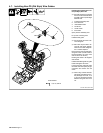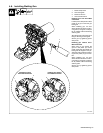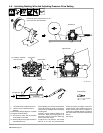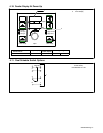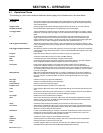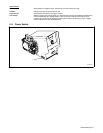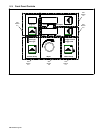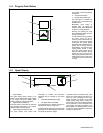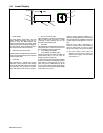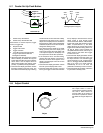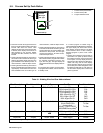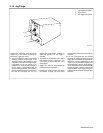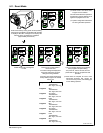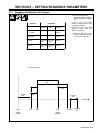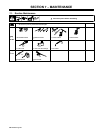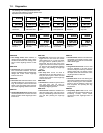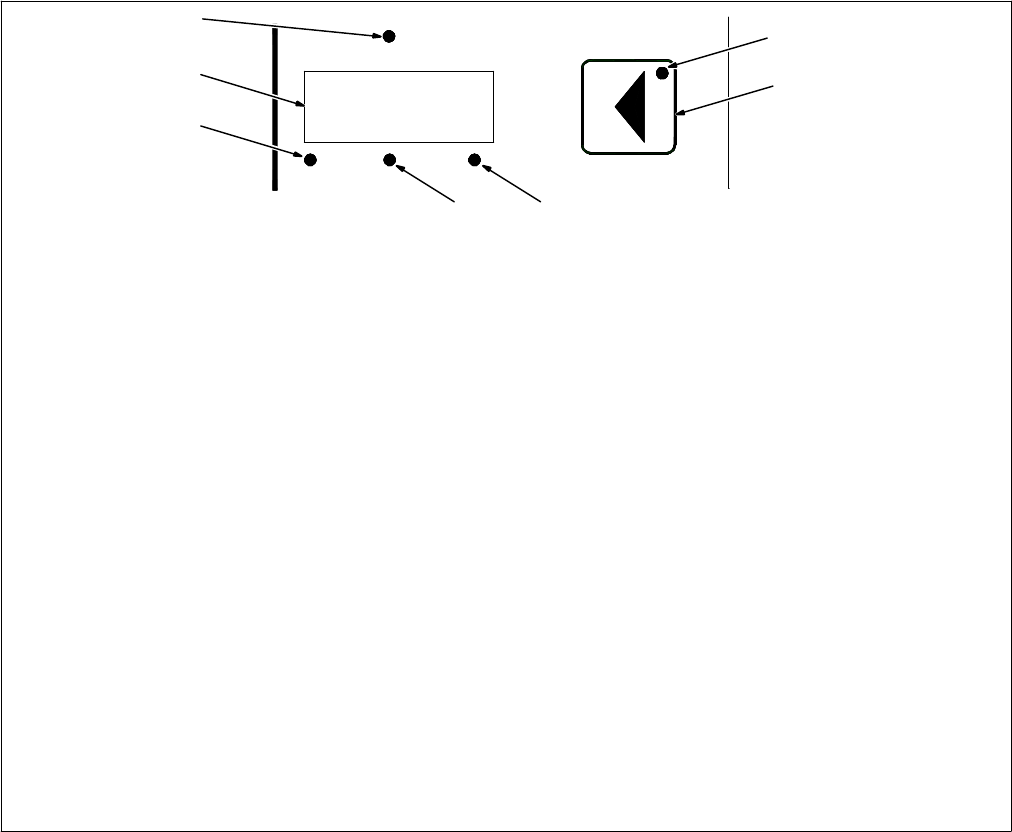
OM-228 956 Page 22
5-6. Lower Display
2
1
5
4
3
WFS Amps Arc Ctl
6
Time
7
1 Lower Display
The lower display shows WFS (wire feed
speed), AMPS (amperage), ARC CTL (arc
control), or Time. The feeder displays only
preset wire speed at idle (not welding). While
welding, the average amperage is displayed.
The lower display shows welding sequence
time when the Time LED is illuminated.
2 WFS (Wire Feed Speed) LED
LED illuminates to indicate the preset wire feed
value is being displayed and can be adjusted
using the Adjust knob.
3 Amps LED
LED illuminates to indicate the average
amperage is being displayed while welding
and for 3 seconds after welding is terminated.
The amperage must be above a minimum
value of 25 amps for this function to operate.
4 Arc Ctl (Arc Control) LED
LED illuminates to indicate that inductance
(MIG) or ARC [Pulse, Accu-pulse, or RMD
(optional)] is being displayed and can be
adjusted using the Adjust knob.
5 Time LED
LED illuminates to indicate that a time value is
being displayed for a sequence function and
can be adjusted using the Adjust knob.
6 Lower Display Push Button
7 Lower Display Push Button LED
Pressing the button illuminates the LED and
selects either WFS or Arc Ctl value for
changing using the Adjust knob.
To select Arc Ctl, press and hold lower display
button for 2 seconds. The top display will show
either INDU for a MIG program or ARC for
Pulse, Accu-pulse, or RMD (optional). To exit
Arc Ctl or INDU, either press the upper display
push button or press and hold the lower display
push button for 2 seconds.
During a welding program operation, it is
possible to change WFS (wire feed speed) by
using the Adjust knob regardless of the active
program sequence that appears on the dis-
play.
When the Arc Ctl LED is illuminated, it is
possible to change values while welding by
using the Adjust knob. To return to actual
values on the display, exit the Arc Ctl display.
. The lower display push button has
additional functions when entering the
sequence and trigger control functions
(see Section 5-7).



